Jirisan Manbokdae Peak (지리산 만복대)
15.8 Km 24999 2021-02-05
Sandong-myeon, Gurye-gun, Jeollanam-do
+82-61-780-7700
Manbokdae Peak in the west soars at the boundary between Sandong-myeon, Gurye-gun and Namwon-si at 1,433.4 meters above sea level. ”Man” means “full of something” and “bok” means “fortune.” Like the name, Manbokdae is considered as a fortunate mountain with great views as it is surrounded by smooth hills. According to an old story, Manbokdae Peak was chosen as one of the 10 scenic areas, where people come to receive good fortune.
Yeoneu [Korea Quality]여느[한국관광 품질인증]
16.8 Km 1 2023-05-23
116-68 , Cheonbyeon-gil, Gurye-gun, Jeollanam-do
+82-10-7353-1802
Pension Yeoneu in Gurye, Jeollanam-do, stands on the site where Korean independence activist Wang Jae-il was born. The mint-green roof gives the place a fairy tale feel, while inside it’s friendly and welcoming. The pension is let out as a single house, which includes an annex building with a large bathtub, a sunroom, and a sun deck. Throughout the house, guests will notice vintage items collected from the owner’s travels in the US, Europe and Korea.
Gurye Fifth-Day Market & Gurye Traditional Market (구례5일장 / 구례전통시장(3, 8일))
16.9 Km 16129 2021-01-13
20, 5ilsijangjageun-gil, Gurye-gun, Jeollanam-do
+82-61-780-2358
Gurye is famous for its location near the first national park, Jirisan Mountain, and is home to clean water and spacious fields near Seomjingang River. The main products of this area include a variety of wild herbs, vegetables, sansuyu (cornus fruit) and plums from Jirisan Mountain and Baegunsan Mountain.
Houses with cornus fruit trees are easily found in the district of Sandong-myeon, Gurye-gun and the whole village gets dyed yellow in the spring and red in the fall. The amount of sansuyu from the area accounts for nearly half Korea’s total.
Also, chestnuts are common in Gurye Market as a complex of chestnut tree takes up 1,400 ㏊ of the land.
Gurye Sansuyu Village (구례 산수유마을)
17.1 Km 23411 2020-04-25
6-12, Wianwolgye-gil, Gurye-gun, Jeollanam-do
+82-61-783-9114
Sandong-myeon in the Gurye-gun region is widely known as the home of sansuyu (cornus fruit) and is responsible for 70% of Korea’s sansuyu fruit production. The Sansuyu Village, located at the foot of the southwest side of Manbokdae Mountain (1,433 meters), is considered the region’s most representative village of sansuyu. The village has a beautiful natural landscape with the snow-covered Jirisan Mountain range to its back and a small valley to its right.
Visitors to the village can wind down at the hot spring complex nearby, which is famous for its germanium content and said to have numerous health benefits. The sansuyu flowers of Sansuyu Village typically are at full bloom between March 20 and March 31, drawing throngs of visitors.
* Please note that blossom dates are not exact and change slightly from year to year.
Saseongam Hermitage (Gurye) (사성암(구례))
17.4 Km 37101 2024-02-19
303 Saseongam-gil, Muncheok-myeon, Gurye-gun, Jeollanam-do
Saseongam Hermitage is a hermitage located at the peak of Osan in Gurye (elevation 531m). It is estimated to have been built during the Baekje period (B.C. 18-A.D. 660). Many people visit it to see the sanctuary where the 53 statues of the Buddhist Avatamsaka Sutra are enshrined. The view of the Seomjingang River and the village from the temple is magnificent, and the refreshing breeze feels as if it penetrates through one's body, leading to its designation as a scenic spot in August 2014.
Gurye Sansuyu Festival (구례산수유꽃축제)
17.4 Km 42473 2024-02-27
45 Sanggwan 1-gil, Gurye-gun, Jeollanam-do
+82-10-2079-4546
Gurye Sansuyu Festival is an annual spring flower festival. Major programs include exhibition of local products made from sansuyu (cornus fruit), while other programs include traditional music and dance performances, experience programs, and fireworks.
Sancheong Daewonsa Temple (대원사(산청))
17.6 Km 18168 2021-08-13
453, Pyeongchonyupyeong-ro, Sancheong-gun, Gyeongsangnam-do
+82-55-972-8068
Located at the eastern foot of Jirisan Mountain, Daewonsa Temple was first built in 548 during the Silla dynasty, but it remained closed for over thousand years until it was renovated and made bigger with the name Daewon. Unfortunately, the entire premises were lost to a big fire during the night of January 12, 1914, and all the halls and pavilions, including Yosachae, totaling 184 rooms in 12 buildings, were rebuilt in 1917. However, they were damaged once again during the Korean War and were abandoned until the war ended where the temple was rejuvenated and made even bigger. Located nearby are Geoyeonjeong and Gunjajeong Halls that are believed to have been the studying venue of scholars.
* Daewonsa Valley
The two-kilometer-long valley that stretches from the parking lot at the entrance to Daewon Temple to the temple itself is surrounded by high hills and curious-looking rocks. The clean water that oozes out through craters between the rocks generates unusual scenery. Associated with Yongso Pond is the legend that a dragon lived in it for hundreds of years before it finally flew away. Somakgol Valley is known to be the place where the last king of Garak Kingdom came to feed his cows and horses.
Namwon Silsangsa Temple (실상사(남원))
17.7 Km 8876 2024-04-07
94-129, Ipseok-gil, Namwon-si, Jeonbuk-do
+82-63-636-3031
Silsangsa Temple was constructed by Monk Jeunggak, as one of nine special temples in the year 828. The temple was established because of the theory of divination, based on topology. The belief held that Korea’s good spirit would be taken away to Japan, bringing bad luck if the temple was not constructed at this particular location. The temple was reconstructed in the 26th year of King Sukjong’s reign (1700) after it was completely destroyed during the Imjin War (1592-1598). However, it was almost burnt down in the 19th year of King Gojong’s reign (1882).
It is presently preserved just as it was during the Unified Silla Kingdom, with its three-story pagoda and its 11 treasures with a total of 17 cultural assets. The entrance of the temple lies in the middle of a rice field and the temple has a pastoral view, surrounded by trees. From the entrance, visitors can cross the half-moon shaped stone bridge to find a remarkable totem pole.
Daewonsagyegok Valley (대원사계곡)
17.9 Km 46018 2021-02-24
Samjang-myeon, Sancheong-gun, Gyeongsangnam-do
+82-55-970-7201
Daewonsagyegok Valley is a place where one can be appreciate nature's musical harmony of stream water, wind brushing against the leaves, and the chirping of birds. The nearly 12-kilometer-long Daewonsagyegok Valley's stream water originates from the highest peak of Jirisan Mountain called Cheonwangbong Peak, and flows through Jungbong and Habong Peaks, as well as Ssukbatjae Pass, Saejae Pass, Wangdeungjae Pass, Bammeorijae Pass, and Ungseokbong Peak. Before reaching the valley, the water joins the currents from Sinbatgol, Jogaegol, and Bambatgol Valleys. The volume of water increases as it passes Saejae and Oegok Village and reaches Yupyeong-ri where Daewonsa Temple is located. The incessant sound of running water fills the silence of the forest as if Buddhist nuns were chanting blessings.
Jirisan Hanok Village [Korea Quality] / 지리산한옥마을 [한국관광 품질인증]
18.0 Km 11964 2024-04-07
43 , Daejeongbangcheon-gil, Namwon-si, Jeonbuk-do
+82-63-636-1003, +82-10-8107-1838
Jirisan Hanok Village, in Namwon-si, Jeollabuk-do, is a famous old house at the foot of Jirisan National Park’s Cheonwangbong and Nogodan Peaks. Just 20 minutes by car away from Nogodan and Baemsagol Valley Trail, the place is popular with walkers especially in the summer. Businessmen, poets and writers come here for the beautiful scenery; in particular, a candidate for the 2008 Nobel Prize in Literature stayed and worked here for a while.
![Yeoneu [Korea Quality]여느[한국관광 품질인증]](http://tong.visitkorea.or.kr/cms/resource/34/2949134_image2_1.jpg)

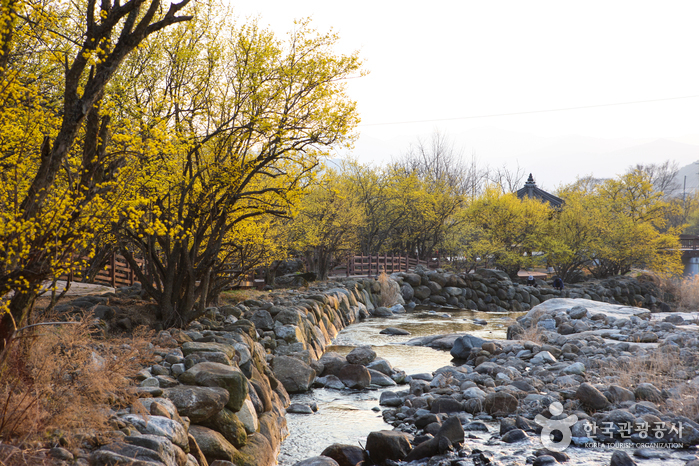
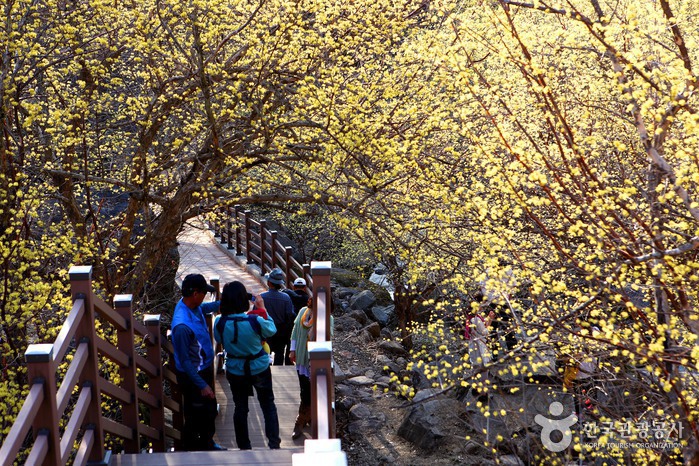
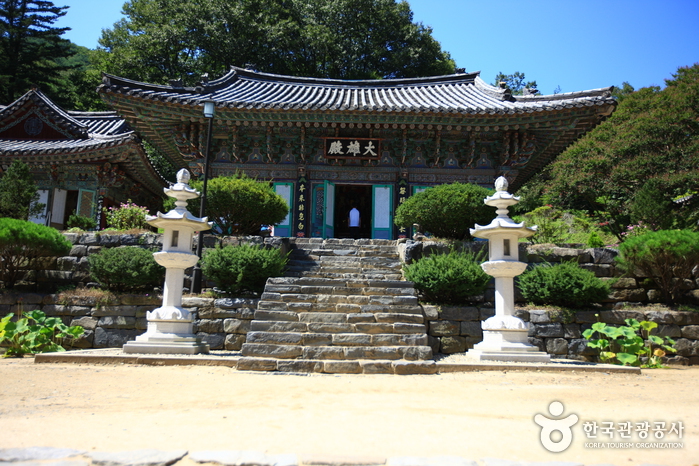
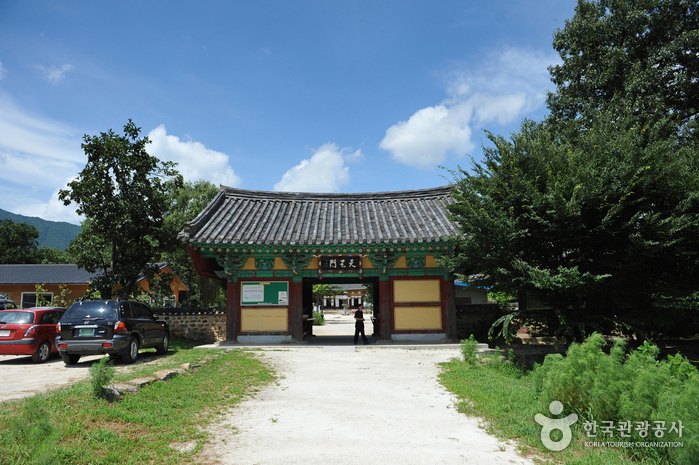
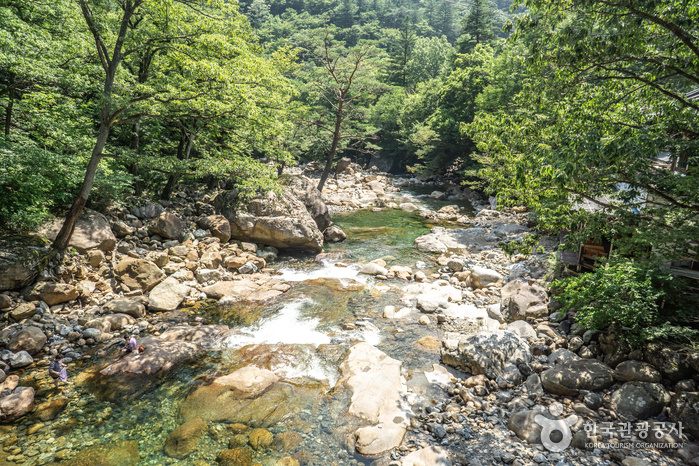
![Jirisan Hanok Village [Korea Quality] / 지리산한옥마을 [한국관광 품질인증]](http://tong.visitkorea.or.kr/cms/resource/58/3042358_image2_1.jpg)
 English
English
 한국어
한국어 日本語
日本語 中文(简体)
中文(简体) Deutsch
Deutsch Français
Français Español
Español Русский
Русский